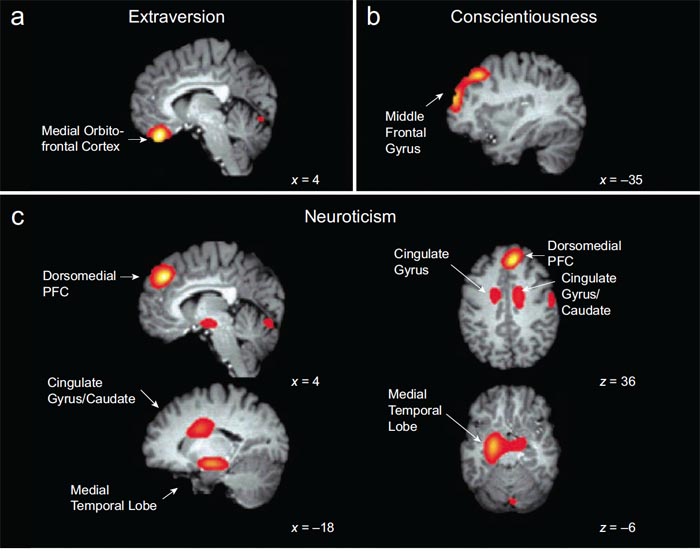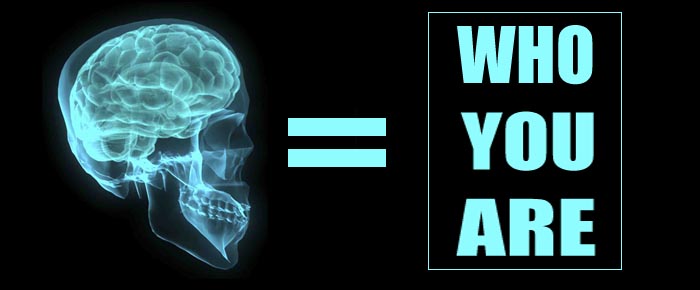New research shows that personality traits are mirrored by changes in
our brains. These changes define who we are. To change your personality
you need to reconfigure your brain!
by Dan Eden for viewzone
Are you an optimistic person? Do you care about the feelings or
wellbeing of others? Or do you sometimes seem withdrawn and notice the
bad things going on in the world... We all have our "ups and downs" and
the kind of attitude we have towards life defines our personality. But
what exactly is personality? And can it be changed?
Right now, as you are reading this, your assessment of the external
world is being processed and filtered by your brain. While the brain has
often been compared to a computer, it really does not have software.
Most of what you retain, manipulate and categorize from the outside
world is the result of hardware -- the neurons and their components are
physically rearranged.
This means that the kind of personality you have right now is the result
of certain unique configurations within your brain. Yes, personality
can and does change over time, but it requires similar changes to the
structure of your brain. I hope to show you how this can be achieved in
this article.
What exactly is personality?
Psychologists have had tests to measure personality for decades. The
behavior that we most often exhibit is called a trait. And, for decades,
there have been as many traits as there are adverbs to describe
feelings. But that's changed now. Psychologists have rendered all of the
possible traits down to five -- The Big Five. And with this new
approach to understanding personality has come the link between these
five characteristics of personality and specific regions of the brain.
The Big Five -- characteristics of personality:
- Extraversion -- (outgoing / energetic vs. shy / reserved).
Energy, positive emotions, surgency, and the tendency to seek
stimulation in the company of others.
- Neuroticism -- (sensitive / nervous vs. secure / confident). A
tendency to experience unpleasant emotions easily, such as anger,
anxiety, depression, or vulnerability.
- Agreeableness -- (friendly / compassionate vs. competitive /
outspoken). A tendency to be compassionate and cooperative rather than
suspicious and antagonistic towards others.
- Conscientiousness -- (efficient / organized vs. easy-going /
careless). A tendency to show self-discipline, act dutifully, and aim
for achievement; planned rather than spontaneous behavior.
- Openness -- (inventive / curious vs. cautious /
conservative). Appreciation for art, emotion, adventure, unusual ideas,
curiosity, and variety of experience.
Kung Fu Psychology
In the martial arts there is a phenomenon called "muscle memory." A
particular movement is practiced again and again -- in slow motion at
first, but then at lightening speeds. Eventually, a complex thrust or a
defensive move involving many precise steps is encoded in the body's
muscles where it can be executed perfectly without conscious thought.
Our attitudes and emotions are like this also. We learn how to react to
the outside world, often without having to make conscious decisions.
But what if our reactions are causing problems, like making is depressed
or self-destructive? What if our personality keeps us feeling lonely or
instigates conflicts with our family, friends or the law? Can anything
be done?
I was watching a Steven Seagal movie recently and one of the antagonists in the film asked Seagal's Kung Fu character,
"Inside of me there are two dogs. One of the dogs is
mean and evil. The other dog is good. The mean dog fights with the good
dog all the time. Which dog wins?" To which Seagal answers, "The one I feed the most."
The wisdom in this riddle was recently demonstrated by a couple of scientific studies I think you need to know about.
The Dynamic Brain
Colin G. DeYoung [right]
of the Psychology Department, University of Minnesota, and his
colleges, recently published the results a study they conducted which
linked personality traits to changes in specific regions of the brain.
The study found significant correlations of increased and decreased
volume in parts of the brain associated with the "Big Five"
characteristics of human personality.
In their study, they had 116 adults take the standardized test which
measures each of the Big Five personality characteristics. Then each
subject was subjected to brain scans to measure specific regions in
their brain. While these results will only be meaningful to a
neurologist, the implications of these findings should have significance
for each of us.
The Study
In a previous article on viewzone, Left Brain : Right Brain, I explained how our brains are actually two brains
connected together by a bundle of nerves. Each side, or hemisphere, has
certain characteristics for processing information. These can change
depending on the dominant side, with each hemisphere controlling the
opposite side of the body. That being the case, the DeYoung researchers
used only right handed subjects to avoid that whole pandora's box. The
subjects were also screened for any psychiatric disorders, brain
injuries or drug use -- things that could alter the parts of the brain
they were measuring.
The subjects were given the Revised NEO Personality Inventory to assess
their personality, then a 3-T Allegra System (Siemens, Erlangen,
Germany) was used to acquire a high-resolution structural image --
magnetization-prepared rapid gradient-echo (MPRAGE) -- of their brains.
Since people have different brain sizes, the proportions for each brain
(including adjustments for sex and age) were taken into account.

For Extraversion, there was a significant association with volume in medial orbitofrontal cortex.
For Neuroticism, the two largest regions of association were in
right dorsomedial PFC and in portions of the left medial temporal
lobe, including posterior hippocampus, as well as portions of basal
ganglia and midbrain, including globus pallidus
and bilateral subthalamic nuclei. Both of these associations were
negative, meaning the volume was decreased. There was an increase of
volume seen bilaterally in the mod-cingulate cortex, extending to the
cingulate gyrus and, in the left hemisphere, into the caudate.
Additional regions not previously considered were also found to have
significant increases in volume. These were the middle temporal gyrus
and one in the cerebellum.
Conscientiousness was associated positively with volume in a
region of lateral PFC extending across most of the left middle frontal
gyrus. An unpredicted negative association with Conscientiousness was
found in posterior fusiform gyrus.

For Agreeableness, there was a significant positive association
in the retrosplenial region of posterior cingulate cortex and a
significant negative association in superior temporal sulcus and
adjacent superior temporal gyrus. An additional, unpredicted, positive
association with Agreeableness was found in fusiform gyrus.
Openness showed no significant correlation to an increase in any
specific region of the brain. It is thought that all of the other
characteristics contribute to the functionality of this trait.















